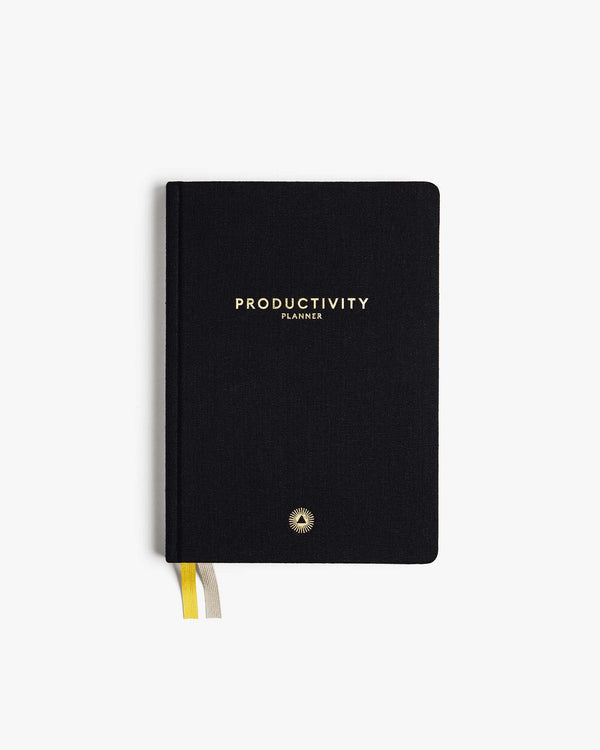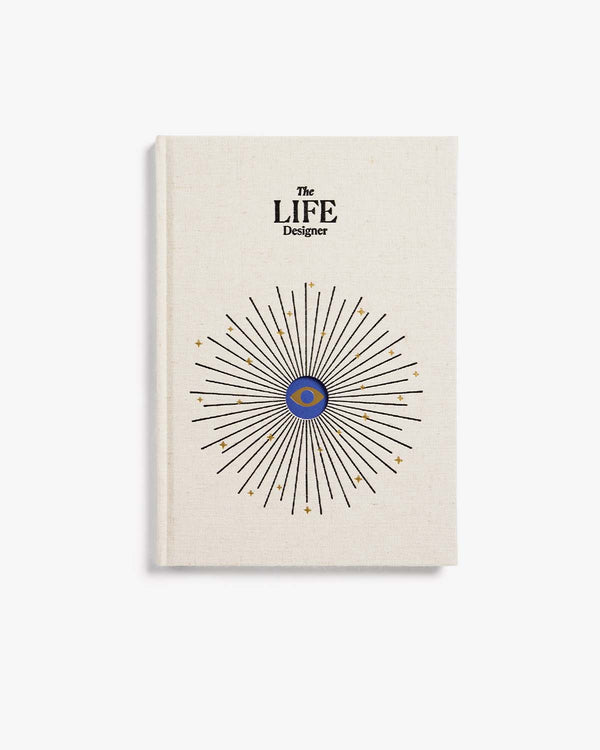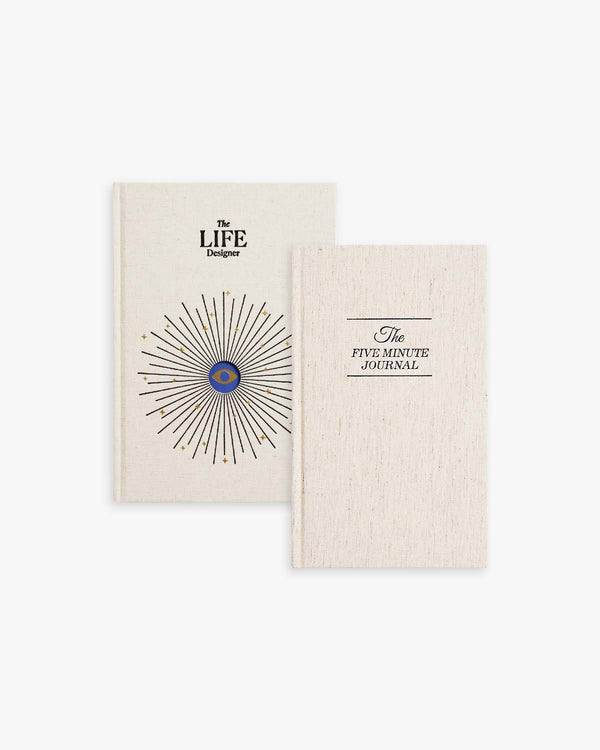Managing Your Day More Effectively with The Productivity Planner

The following is a guest post by Leticia Mooney, CEO of content marketing and strategy agency Brutal Pixie, and Productivity Planner user. In this post, she describes how she modified the Productivity Planner to better manage her time and prioritize her day.
Enter Leticia.
Picture this scenario: Crazy, distracted, hell-bent on productivity.
When you buy the Productivity Planner, you are probably like I was. You start the day with the greatest of intentions, but by the end of it, you feel like you haven’t achieved half as much as you imagined you could have. For some reason, you got distracted. Your mental to-do list is as long as the Amazon River (and growing every moment). Over the course of your life, you’ve tried every listing app on the planet, and decided eventually that one was great (even though you rarely use it ‘properly’, whatever ‘properly’ is). You’ve got distraction blockers, you try to go for walks, you are pushing yourself to grow your business as hard as you can, and even though you don’t mentally feel like you’re working a thousand hours a week, your body sure does feel that way.
In your quest for higher productivity, you went hunting around the internet. It’s extremely possible you chanced upon Tim Ferriss waxing lyrical about the products by Intelligent Change. Or someone else (maybe someone like me? haha).
And so, you went to the website. You saw the journal. You bought all the products in the store, and settled in happily to use them.
First: Game changer. Then: It didn’t fix your never-ending listAfter using it for a while, you may have discovered that you have these items that just bloody well keep falling off the bottom of the list.
Welcome to my world. When I started using the Productivity Planner, it was a game-changer. Suddenly, focusing on the important (read: strategic) items in my work day was easy. Actually counting work intervals, and tracking them, made a big difference to how I approach my days – and my scheduling. Thinking ahead of time to what a productive day actually means resulted in days that became highly productive, almost by default.
But after six months of this, I found that there were things that just kept falling off the bottom of the list.
The things that kept falling off were the things I teach. You know you’re in trouble when that happens! I run a content strategy and content marketing agency, schooling people in the effective management of their content and thought leadership tasks… but those were the exact jobs in my world that kept getting put off.
It’s a common story for many people in senior, founding, or executive roles. By the time they’ve done everything in their day, they’re all out of juice. Sitting down to write a blog seems like the last thing in the world that you want to do: You’ve been at a computer screen all goddamned day.
This is what pushed me to re-invent my approach to the Productivity Planner.You see, dear productivity seeker, the Productivity Planner has five slots for tasks on any given day. Yet, if you’re a knowledge worker like me, you’d be lucky to get just three of them done. What happens when you fill every slot is that you still find yourself overwhelmed.
Now, you could leave slots open, but that doesn’t really help us either. Why? All we can see staring up at us are those empty places, even though we know that there is a huge amount to be done.
Let’s look at the structure of the Planner.
When it comes to the structure of the Productivity Planner, the introduction gives us some guidelines to make sure that we work on the most important task first up. Then it asks us to prioritize the remaining tasks on a given day. We have secondary tasks of importance and additional tasks, which you should only do after the other three are completed.
What it assumes is that you know how to differentiate between ‘important’ and ‘additional’.
How do you differentiate between important and additional?Do you have your own system? Additional tasks might be ‘in addition’ but very often they are still important. Taking my earlier example, my own publicity and thought leadership is important; but it is in addition to the tasks that need to be done in a given day.
While some writers, like advertising’s lion, David Ogilvy, suggest that this kind of thought leadership is what you need to do after hours, I wasn’t satisfied that it should be this way. We live in a highly connected world. But even if we don’t have kids in our families, we have other significant people who deserve our attention, for the brief hours in a day that we have between getting home and going to sleep. When you’re working 6 am – 4 pm (or 5 pm), and you go to bed around 9 pm, that doesn’t give you much life time in your day, right? Five hours in which to converse, eat, read, study, bond, watch stuff, relax, really isn’t very much.
This is where I went back to Stephen R. Covey.
If you haven’t read 7 Habits of Highly Effective People, go to your library and borrow a copy. Then turn to page 151 to look at his Important – Urgent Matrix.

This matrix asks us to evaluate our to-do list in terms of urgency, and importance. It gives us a method for mapping where we are currently spending our time, and how to shift how we work so that we are spending time on the important things. And this brings us back to the Productivity Planner’s important – important – additional.
Solving this dilemma asks you to think about why you’re in business in the first place. What are the categories of things that you do?
That’s how I started re-titling the sections in my Productivity Planner.
I take a white-out tape or pen to my book every week, and replace the words about importance and additional with meaningful words. I got to the point where I could stand feeling like everything was extra. And even with the extra, there was still no space! I had no sense of what was really working for me, where I could find the next piece of leverage.
Think about it.
At its simplest, your strategic work keeps you on track. It ensures that you grow your business. Your business exists to serve people, to solve their problems, help them to buy the services or products that they need. And your role is to lead others: To lead the organisation, to make a positive impact on your profession.
In my daily work, therefore, I don’t have tasks that grow in levels of importance.
• I have tasks that Serve: Without the service, there are no more clients and no more business.
• Then, instead of ‘secondary importance’, I have tasks that help us Grow: Without growth, even if we do serve, then the business will slowly atrophy and die.
• And finally, instead of ‘additional’ tasks, I have tasks that enable me to Lead: Without leadership internally and externally, the business loses direction, and I lose credibility.

Defining effective task categories fits my style, my work, and my scheduling – and keeps me on track.
Serving means being of service to others, which in my case means our clients. Any work that serves a client, a partner, a stakeholder goes here. Anything that may impact the service to others also goes here. So, if I’m needed for client research, or to be on the tools, or for completing something that enables someone else to serve a client, this is its home.
Grow, as I’ve already discussed, is for the strategic work. The tasks that develop and grow the business. It’s sales, focused marketing or advertising, measurement, networking, writing growth experiments, and everything in between. It’s also time for thinking, dreaming, planning.
Leadership means behaving the way I would like others to behave. It means flying the flag for the company’s mission, values and intention. It means publicity and PR to stay visible. It means networking, meeting people, communicating. This is why I can put a task like Clear all emails into the Lead section, without feeling like I have put administrative ‘busy work’ in the place where a task should be: Now, dealing with email is about modeling the right behaviour, not about ‘getting the admin done’, which devalues the activity.
From the tasks to the schedule. And voila! This method matches the Maker’s Schedule.
I love my schedule, because it allows me to feel free to focus on other things. Once I have my tasks mapped and know where they are going to go, this Serve, Grow, Lead structure matches the Maker’s Schedule that Brutal Pixie follows. On the Maker’s Schedule, the deep, creative, knowledge work happens first, and is uninterrupted during the best part of the day.
By following the Maker’s Schedule, I’m excited about getting to work. I can give clients and stakeholders the best of me, every single day. Then, as the day goes on, the tasks in Grow and in Lead follow my natural energy patterns. I can dream, when I’m daydreaming anyway. I can go meet people, when I’m feeling social.
As a natural introvert, this method of planning and scheduling has also solved one additional problem: Bailing on events. Because events typically happen at the end of the day, keeping Lead as the last segment of activities means that it’s harder for me to justify staying home.
The biggest bonus of the entire shift has been that I have no trouble getting out of bed at 5 am, to get to my desk by 6 am. And at the end of the day, I’m just as energised as when I began. Matching the Productivity Planner and my Maker’s Schedule has become an effortless way of working; and my only explanation for it is that it must be my natural inclination anyway. Every other type of schedule is heavy, where this one is light and fits like a glove.
Finally, I’ve gotten to the point where the Productivity Planner not only meets my needs perfectly, but it also fits into my scheduling methodology. In this way, I’ve found that I am consistently hitting productivity targets of 10 every single day, and getting every single item done.
Don’t be afraid to make your tools work for you
So often, we find or buy tools that are set up in a particular way. We pick them up and start using them, and try to mould ourselves to them. The truth is, their structures are generic. Books like the Productivity Planner have to be generic enough to be useful to the highest numbers of people, in order to justify their existence. But it doesn’t mean that you have to use them that way.
As you pick up resources like this book, find your own way of using them. Just because Tim Ferriss loves it and bangs on about it doesn’t mean that you have to use it the way that he does. And, similarly, just because I love it – and use it differently – it doesn’t mean that you should follow what I do. Instead, when you find the method that works, use it and love it and enjoy it. That’s really the secret to productivity of all kinds, don’t you think?
===
This article originally appeared on Exposito. Leticia Mooney is the Queen Pixie at Brutal Pixie. You can connect with her directly on LinkedIn.











